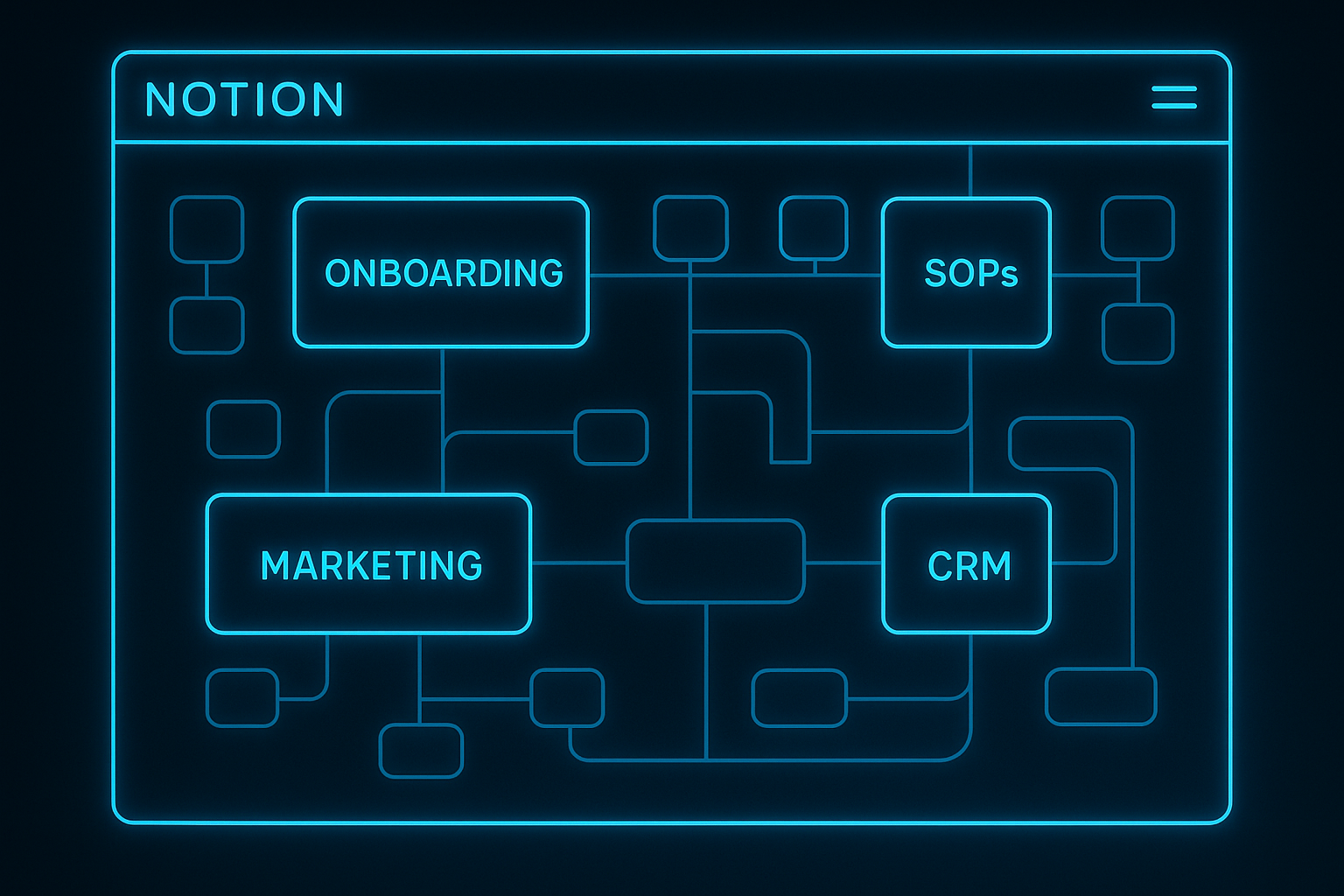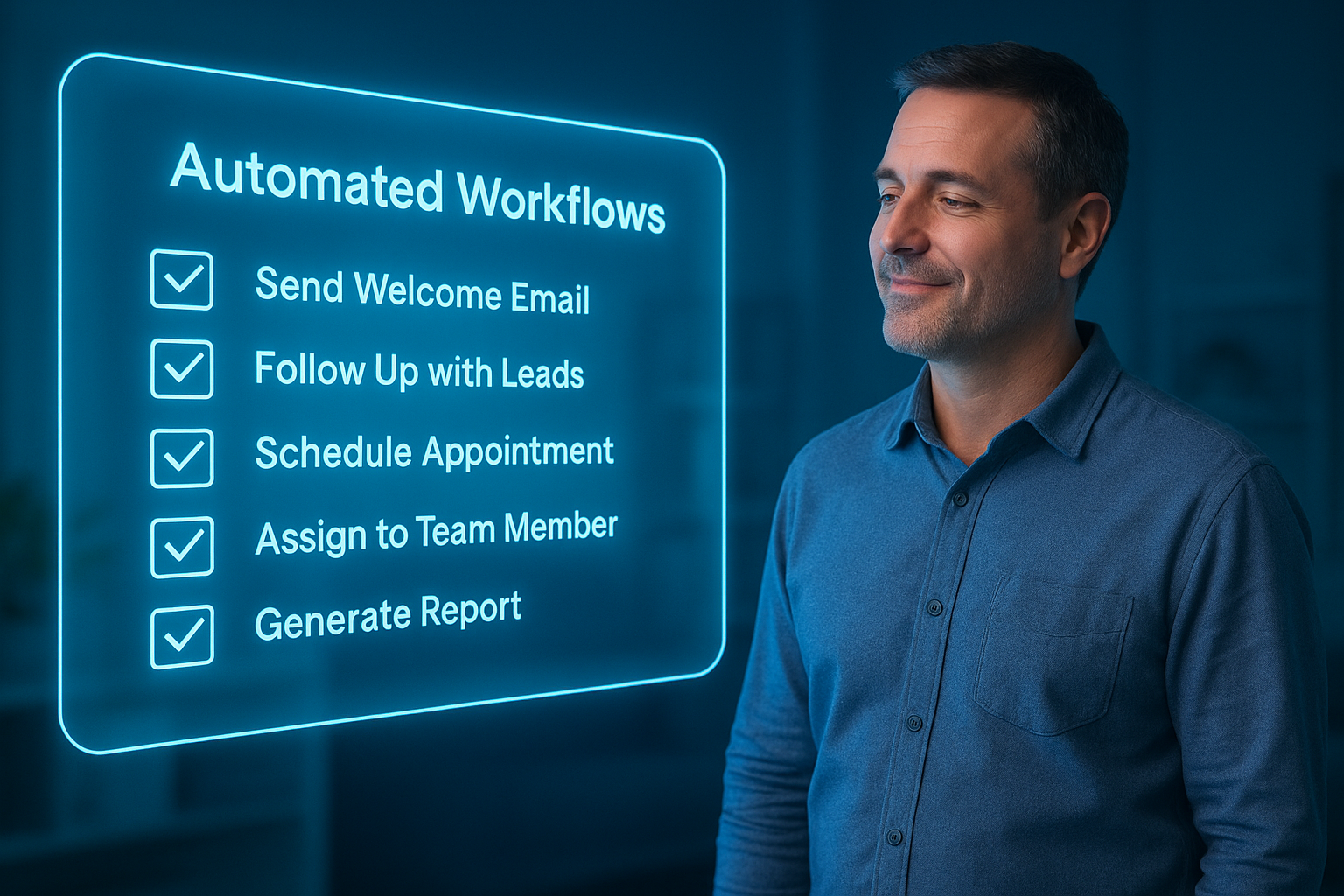How to Use Notion to Centralize Growth
Why Disconnected Tools Keep You Stuck—
and How One Dashboard Can Change Everything
This post contains affiliate links. If you click on a link and make a purchase, I may earn a small commission at no additional cost to you. I only recommend products and services I trust and believe will add value to my readers.

Running a small business means juggling dozens of tasks: onboarding clients, tracking projects, managing content, updating SOPs, training team members—and trying to remember where everything lives. Sound familiar? You’re not disorganized. You’re decentralized.
Most business owners don’t need more tools—they need one place to think, plan, and lead.
That’s where Notion comes in. In this post, we’ll show you how to use Notion as your centralized growth dashboard—combining systems, strategy, and daily execution into one sleek, scalable solution.
Why Scattered Systems Kill Growth
Most businesses start with good intentions—maybe a CRM, a few Google Docs, Trello for projects, Slack for comms, and a course platform. But before long, no one knows where to find anything.
- SOPs live in three different folders.
- Tasks get lost between email and Asana.
- Metrics are tracked inconsistently across platforms.
- New team members have no clear onboarding path.
Check out It’s Not a Time Problem...—because jumping between systems is a huge productivity drain.
You can’t scale chaos.
Notion lets you bring everything together—without sacrificing structure, flexibility, or visibility.
What Makes Notion the Ultimate Business HQ
Here’s why Notion works better than most “project management” tools:
- It’s modular – You build what you need (no bloated features you’ll never use).
- It’s visual – Dashboards make tasks, updates, and workflows easy to navigate.
- It’s collaborative – Comments, @mentions, and shared workspaces keep your team aligned.
- It’s searchable – You never lose a doc, SOP, or task again.
And most importantly, it grows with you. Whether you’re solo or scaling a team, Notion adapts to your operations—not the other way around.
Real Example: How Superhuman Runs Lean Ops in Notion
Superhuman, the premium email platform, uses Notion as its internal operating system. Their team manages product roadmaps, hiring processes, meeting notes, and company knowledge—all from a single Notion workspace.
Instead of siloed tools, everything lives in one place. When new hires join, they get instant access to company processes, onboarding tasks, and role-specific SOPs.
The result? Fewer meetings. Fewer questions. Faster execution.
What You Should Centralize in Notion
You don’t need to move everything overnight. Start by consolidating the systems that create the most friction.
1. SOPs & Process Docs
Stop storing SOPs in random folders or scattered spreadsheets. Use Notion’s database view to house all your repeatable processes. Add categories, tags, owners, and last-updated fields.
2. Onboarding Hub
Create a single link with:
- Company vision and values
- Tools access
- Role-specific training modules
- First-week tasks
Now every new hire starts with clarity.
3. Weekly Planning & Task Management
Use linked databases to track:
- Departmental to-dos
- Company-wide priorities
- Marketing calendar
- Launch timelines
Everything connects—and you only see what matters for your role.
4. Meeting Notes & Internal Communication
Instead of bouncing between Slack, email, and whiteboards, create pages for:
- Weekly meetings (with templates)
- Project briefs
- Departmental updates
The conversation stays tied to the work.
Check out Why Working ON Your Business is the Key to Scaling—because this is what it means to lead from a centralized strategy.
How to Build Your First Notion Growth Hub
- Map Your Pain Points – What do you always ask yourself or your team? What do you lose track of?
- Sketch Your Layout – Start simple: SOPs, Tasks, Projects, Team.
- Use Templates – Notion’s gallery (or our future plug-and-play templates) will save you hours.
- Customize Over Time – You don’t need the perfect dashboard on Day 1. You just need a single source of truth.
The goal is to reduce friction and increase visibility—not build a pretty database you’ll never use.
Final Takeaway
Disorganization isn’t a sign of laziness—it’s a systems issue. When your knowledge, tasks, and strategy are scattered, your team slows down.
Centralization gives you clarity. And clarity unlocks growth.
Notion is more than a productivity tool. It’s your business in one place.
Next Steps
Want help turning Notion into your growth HQ? Download our Business Growth Guide or schedule a strategy call to explore a custom Notion setup that supports your scale goals—without the chaos.
More Marketing Tips, Tricks & Tools










